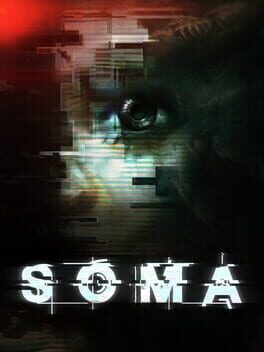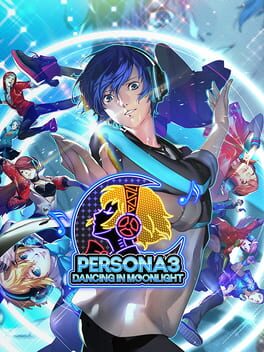Steez76
Bio
In pursuit of artful games.
I especially love those that feature non-linear progression, rewarding exploration, interconnected level design, satisfying combat and lastly meaningful stories.
Hardest difficulty enjoyer (within reason)
Top 5 is limited to one title per developer, otherwise it would be a bit of a FromSoftware sweep. Also I have a bit of a first game in X genre bias.
In pursuit of artful games.
I especially love those that feature non-linear progression, rewarding exploration, interconnected level design, satisfying combat and lastly meaningful stories.
Hardest difficulty enjoyer (within reason)
Top 5 is limited to one title per developer, otherwise it would be a bit of a FromSoftware sweep. Also I have a bit of a first game in X genre bias.
Badges

Pinged
Mentioned by another user

Busy Day
Journaled 5+ games in a single day

N00b
Played 100+ games

Best Friends
Become mutual friends with at least 3 others

Listed
Created 10+ public lists

GOTY '23
Participated in the 2023 Game of the Year Event

Roadtrip
Voted for at least 3 features on the roadmap

Liked
Gained 10+ total review likes

Noticed
Gained 3+ followers

Gone Gold
Received 5+ likes on a review while featured on the front page

Full-Time
Journaled games once a day for a month straight

On Schedule
Journaled games once a day for a week straight
Favorite Games
118
Total Games Played
038
Played in 2024
043
Games Backloggd
Recently Played See More
Recently Reviewed See More
I actually really enjoyed my time with this one. I just needed something immediate and easy to play in the evening, and something Persona felt comforting. The rhythm gameplay is intuitive and satisfying, executing long combos to the best tracks from Persona 3 is exactly as it sounds, fun. It also helps that Dancing in Moonlight has great remixes that sound wholly different to the originals, whilst also sounding more in line with typical dance music. The character customisation is another highlight, boasting great outfits in particular; however, it is hampered for the duration of the game as Yukari’s and Junpei’s social links are reliant on you swapping in new outfits and accessories every dance to rank up, forcing you to put together awful, incoherent looking outfits for the characters, instead of letting you play around with stylish combinations. The social links are still underbaked and largely uninteresting, however the scenes with Elizabeth in were surprisingly amusing.
In conclusion, Persona 3 Dancing in Moonlight is a great way to appreciate Persona 3’s music whilst being further entertained by sharp rhythm gameplay. Overstimulation at its finest.
In conclusion, Persona 3 Dancing in Moonlight is a great way to appreciate Persona 3’s music whilst being further entertained by sharp rhythm gameplay. Overstimulation at its finest.
Rondo of Blood is my favourite classic Castlevania, and the remaining titles I’ve yet to play don’t seem likely to change that. Releasing only two years after Super Castlevania IV, also on a 16-bit console, there is a surprising leap in audiovisual quality. This was due to Rondo of Blood being one of the first games released on CD format. This is fascinating as it meant that Rondo of Blood could feature CD quality music, as well as charming anime style cutscenes with fittingly corny and compressed voice acting all while still being a 2D side-scroller. These cutscenes still look great on the small display of a handheld device despite the limited animation, the best of these is the opening montage which establishes the simple premise of the game and acts as a bit of a hype reel for our new Belmont, Richter. Watching this after booting up the game for testing purposes skyrocketed it to the top of the games, I was interested in playing next and was what got me to consider Castlevania games pre- Symphony of the Night.
The first stage immediately makes an impression on you with a flashy confrontation with Death on top of a moving chariot, a significant step up in sprite work is clear, from the galloping horses pulling you along to the expressive animations of Death himself as he goads Richter, wagging his finger before vanishing from sight. God, I love parallax scrolling, Dracula’s castle just visible in the distance above the trees. The detail in this scene alone is astonishing, pure 16-bit perfection. After a fade to black you make it to the burning village in the opening, another beautiful intertitle slides in, reading “Dinner of Flames” before it dissolves away and the triumphant Blood Relations of Heaven and Earth kicks in, you step forward watching Richter’s Chad walk animation cycle gloriously, you whip the skeletons in front of you and smile, this is Castlevania at it’s peak.
The game ceases to lose this momentum one bit, as each successive stage introduces new locales that are colourful and distinct, alongside new enemies and exhilarating boss battles, which are some of the best designed encounters in any 2D game, certainly the finest in the series. The level design is excellent with lots of verticality and secrets to uncover, enemy placement is challenging but the stages are the perfect length for you to lock in for, without it feeling exhausting, this also mitigates frustration if you get a game over on a boss and have to restart the Stage, as it cuts down on the run back to attempt the battle again. Another improvement Rondo makes is in the removal of frequent insta death pits present in other entries, which can be extremely easy to fall into thanks to knock back and poor enemy placement which often times cannot be reacted to without foresight. Now in Rondo a lot of these ‘would be’ insta death pits lead to alternate paths, adding an element of exploration absent in previous titles, investigating these alternate paths, whipping suspicious blocks, can lead to entirely different alternate stages with hidden maidens to rescue and new bosses that are exclusive to them. I found myself liking the return to the two directional whip as it encourages you to learn effective sub-weapon usage and diagonals aren’t aways consistent on certain D-pads, because of this there is a form of resource management as you collect fuel for these in the form of hearts dropped from candlesticks, conserving hearts is important in giving yourself the upper hand against the concluding boss of each stage as the more your enter the arena with, the more Item Crashes you can unleash. Item Crashes are ultimate moves that you can perform with enough hearts, they launch you into the air where you perform an attack that reflects the current sub-weapon in your possession, these last a long time and deal lots of damage, and depending on the sub weapon can hit the boss when he is out of reach, they can also be used tactically to deal damage while avoiding incoming damage from attacks that cover a large area or are hard to avoid. Some more minor improvements Rondo makes is the ability to jump on stairs and pick up sub-weapons after they’ve been replaced, these changes sound small on paper but they make a huge difference, especially the latter as it allows you to be more tactical in what sub weapon you bring along with you whilst letting you optimise heart collection from candlesticks without worrying about losing you current sub-weapon.
In conclusion Rondo of Blood is a great entry point for the fans of the succeeding non-linear Castlevanias willing to explore the series roots. Rondo of Blood is one of the finest games of its era, sadly overlooked due to it lacking a worldwide release until many years later, with truly incredible stage design, boss battles and a spectacular soundtrack that is one of only two in the series that isn’t constrained by hardware limitations. It’s absolutely an essential play.
The first stage immediately makes an impression on you with a flashy confrontation with Death on top of a moving chariot, a significant step up in sprite work is clear, from the galloping horses pulling you along to the expressive animations of Death himself as he goads Richter, wagging his finger before vanishing from sight. God, I love parallax scrolling, Dracula’s castle just visible in the distance above the trees. The detail in this scene alone is astonishing, pure 16-bit perfection. After a fade to black you make it to the burning village in the opening, another beautiful intertitle slides in, reading “Dinner of Flames” before it dissolves away and the triumphant Blood Relations of Heaven and Earth kicks in, you step forward watching Richter’s Chad walk animation cycle gloriously, you whip the skeletons in front of you and smile, this is Castlevania at it’s peak.
The game ceases to lose this momentum one bit, as each successive stage introduces new locales that are colourful and distinct, alongside new enemies and exhilarating boss battles, which are some of the best designed encounters in any 2D game, certainly the finest in the series. The level design is excellent with lots of verticality and secrets to uncover, enemy placement is challenging but the stages are the perfect length for you to lock in for, without it feeling exhausting, this also mitigates frustration if you get a game over on a boss and have to restart the Stage, as it cuts down on the run back to attempt the battle again. Another improvement Rondo makes is in the removal of frequent insta death pits present in other entries, which can be extremely easy to fall into thanks to knock back and poor enemy placement which often times cannot be reacted to without foresight. Now in Rondo a lot of these ‘would be’ insta death pits lead to alternate paths, adding an element of exploration absent in previous titles, investigating these alternate paths, whipping suspicious blocks, can lead to entirely different alternate stages with hidden maidens to rescue and new bosses that are exclusive to them. I found myself liking the return to the two directional whip as it encourages you to learn effective sub-weapon usage and diagonals aren’t aways consistent on certain D-pads, because of this there is a form of resource management as you collect fuel for these in the form of hearts dropped from candlesticks, conserving hearts is important in giving yourself the upper hand against the concluding boss of each stage as the more your enter the arena with, the more Item Crashes you can unleash. Item Crashes are ultimate moves that you can perform with enough hearts, they launch you into the air where you perform an attack that reflects the current sub-weapon in your possession, these last a long time and deal lots of damage, and depending on the sub weapon can hit the boss when he is out of reach, they can also be used tactically to deal damage while avoiding incoming damage from attacks that cover a large area or are hard to avoid. Some more minor improvements Rondo makes is the ability to jump on stairs and pick up sub-weapons after they’ve been replaced, these changes sound small on paper but they make a huge difference, especially the latter as it allows you to be more tactical in what sub weapon you bring along with you whilst letting you optimise heart collection from candlesticks without worrying about losing you current sub-weapon.
In conclusion Rondo of Blood is a great entry point for the fans of the succeeding non-linear Castlevanias willing to explore the series roots. Rondo of Blood is one of the finest games of its era, sadly overlooked due to it lacking a worldwide release until many years later, with truly incredible stage design, boss battles and a spectacular soundtrack that is one of only two in the series that isn’t constrained by hardware limitations. It’s absolutely an essential play.
This is the first Classicvania game I’ve played, and it has won me over. Super Castlevania IV is frenetic fun, and I found myself greatly appreciating its simplicity. The gameplay is very straightforward, you must progress through linear stages, using your whip and a sub weapon to defeat enemies that obstruct you, whilst managing your health and lives so that you have enough to vanquish each concluding boss. The draw of it is learning from each mistake or death, then adjusting and optimising your approach accordingly, so that you can get a clean clear of each stage.
Initially I felt a great rush completing a stage, as the limited lives system urges you to lock in and play precisely, however later stages become bloated endurance tests, with an increase in awkward enemy positioning, and atrocious platforming, where making a mistake often results in an instant death and reset. Thankfully though this can be mitigated by the use of save states. These stages also exacerbate the issues with the boss battles, as you frequently reach these with less resources to expend. Unfortunately, the majority of boss battles in Super Castlevania IV are frustrating because the arenas are too small, bosses recurrently bump into you and many attacks feel unavoidable, as a result they are more so a test of if you can initiate the fight with full health and lots of hearts so that you are able to out DPS them, rather than that of positioning, reflexes and recognising patterns. Regardless there are some exceptions, such as Dracula which is a tremendous but difficult fight.
Overall, I really enjoyed my first foray into classic Castlevania, however I feel like because of my use of save states in the latter half of the game, I circumvented a lot of frustration and tedium. I also derived additional enjoyment from playing this handheld on my RG35XX, a vertical Anbernic emulation device modelled after the original Gameboy, which I can’t shill for enough.
Initially I felt a great rush completing a stage, as the limited lives system urges you to lock in and play precisely, however later stages become bloated endurance tests, with an increase in awkward enemy positioning, and atrocious platforming, where making a mistake often results in an instant death and reset. Thankfully though this can be mitigated by the use of save states. These stages also exacerbate the issues with the boss battles, as you frequently reach these with less resources to expend. Unfortunately, the majority of boss battles in Super Castlevania IV are frustrating because the arenas are too small, bosses recurrently bump into you and many attacks feel unavoidable, as a result they are more so a test of if you can initiate the fight with full health and lots of hearts so that you are able to out DPS them, rather than that of positioning, reflexes and recognising patterns. Regardless there are some exceptions, such as Dracula which is a tremendous but difficult fight.
Overall, I really enjoyed my first foray into classic Castlevania, however I feel like because of my use of save states in the latter half of the game, I circumvented a lot of frustration and tedium. I also derived additional enjoyment from playing this handheld on my RG35XX, a vertical Anbernic emulation device modelled after the original Gameboy, which I can’t shill for enough.











